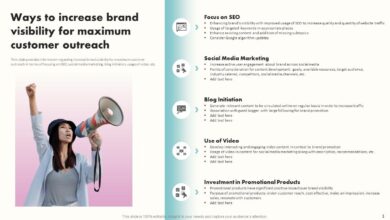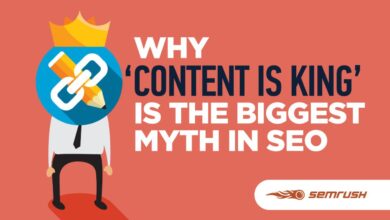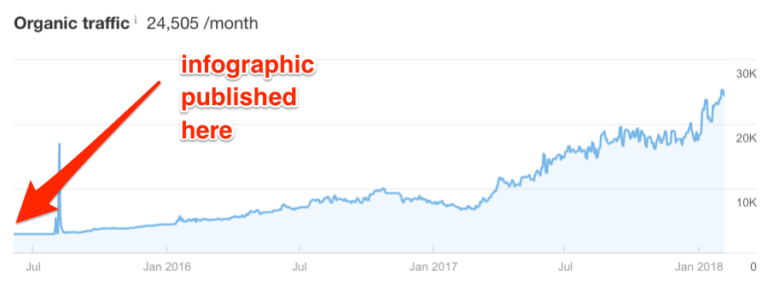
Linkable Assets Your WordPress Content Powerhouse
Linkable assets are the key to driving traffic and establishing authority in the WordPress world. They’re not just any old blog post; they’re meticulously crafted pieces of content designed to attract backlinks and boost your online presence. This guide dives deep into defining, creating, optimizing, promoting, and measuring the impact of these valuable assets, equipping you with the knowledge to build a successful WordPress site.
We’ll explore various types of linkable assets, from insightful infographics to comprehensive case studies, and discuss the strategies for creating and optimizing them for maximum linkability. Learn how to leverage best practices, understand effective promotion channels, and ultimately measure the return on investment of your efforts. This guide will provide actionable insights to take your WordPress site to the next level.
Defining Linkable Assets
Linkable assets are the cornerstones of successful content marketing strategies. They are pieces of content designed to attract inbound links from other websites. These links are crucial for improving search engine rankings, driving traffic, and establishing authority within a niche. They are more than just informative; they are designed to be shared and cited, thus increasing brand visibility and credibility.Linkable assets are distinguished from other content formats by their inherent value and potential for attracting backlinks.
While blog posts and articles can be linkable, they are often part of a larger strategy that leverages linkable assets. Linkable assets are typically more in-depth, comprehensive, or unique, providing valuable information that others are incentivized to link to. They are not merely promotional pieces but resources that others find beneficial and want to share.
Types of Linkable Assets
Linkable assets come in a variety of formats, each serving a unique purpose. Understanding these different types allows for a more strategic approach to content creation and distribution.
- In-depth Guides and Tutorials: These assets offer comprehensive, step-by-step instructions on a particular topic. They’re valuable resources for users seeking solutions or explanations. Examples include detailed tutorials on software use, comprehensive guides to industry best practices, or detailed explanations of complex concepts.
- Research Reports and Data-Driven Analyses: These assets demonstrate expertise and provide insights that others can use in their own work. Examples include industry trend reports, analyses of market data, or detailed research on a specific topic. The key is to present data in a way that’s accessible and actionable for other content creators.
- Infographics and Visual Data Representations: These visually appealing assets present complex information in an easily digestible format. They can effectively communicate key data points, trends, or relationships. Examples include data visualizations of industry trends, comparisons of different products or services, or visual representations of complex statistics. Visual content is often more shareable than text-heavy posts.
- Case Studies and Success Stories: These assets provide concrete examples of how a product or service has helped others achieve success. They showcase real-world applications and demonstrate the value proposition of a company or brand. Examples include detailed case studies of successful marketing campaigns, narratives of customer success stories, or examples of how a particular product was implemented effectively.
- Templates and Checklists: These assets provide practical tools that readers can use immediately. Templates and checklists can streamline processes, solve problems, or save users time and effort. Examples include templates for project planning, checklists for marketing campaigns, or templates for creating effective presentations.
Benefits of Linkable Assets
A well-defined strategy for linkable assets yields substantial benefits. They drive traffic to your site, boost search engine rankings, and establish you as an authority in your field.
| Asset Type | Description | Benefits | Example |
|---|---|---|---|
| In-depth Guides | Comprehensive instructions on a topic | Authority, trust, increased traffic, backlinks | “How to start a blog in 2024” |
| Research Reports | Data-driven analyses of trends | Credibility, expertise, backlinks, citations | “2023 Marketing Trends Report” |
| Infographics | Visual representation of data | Shareability, engagement, backlinks, easily digestible information | “Social Media Platform Usage Statistics” |
| Case Studies | Examples of successful implementations | Proof of concept, trust, backlinks, social proof | “XYZ Company’s Customer Acquisition Strategy” |
| Templates/Checklists | Practical tools for readers | Value, engagement, backlinks, increased conversions | “Project Management Template” |
Creating Linkable Assets
Crafting linkable assets is more than just churning out content; it’s about producing valuable, shareable work that resonates with your target audience and earns the trust of other webmasters. This involves understanding what makes content compelling and strategically positioning it to attract backlinks. High-quality linkable assets are the cornerstones of a strong online presence and effective strategy.Effective linkable assets are not just well-written; they provide unique insights, solve problems, or offer a fresh perspective on a topic.
They demonstrate expertise and build authority in your niche, ultimately driving traffic and improving search engine rankings. A key aspect is anticipating what information other website owners and their audiences would find valuable and insightful.
Ideating Linkable Assets
Generating compelling ideas for linkable assets requires a deep understanding of your target audience and their needs. Start by identifying gaps in the existing information landscape, topics that lack comprehensive, insightful coverage, or issues that require innovative solutions. Analyze what your competitors are doing and look for opportunities to provide a superior or more comprehensive approach. Consider current events, trending topics, and emerging technologies, and think about how you can contribute unique value.
Linkable assets are crucial for content creators, especially in the digital age. Think about how important it is to have content that’s easily shared and discussed. This is especially true when it comes to platforms like Clubhouse, which is actively trying to retain contributors by implementing creator payment systems, as detailed in this article on clubhouse fights to keep app contributors with creator payment.
Strong linkable assets, whether blog posts, podcasts, or videos, are essential to successful content creation and engagement.
Developing a Compelling Linkable Asset
Developing a linkable asset involves a meticulous process from concept to completion. This requires a careful plan to ensure that the asset meets the needs of your target audience and is optimized for discoverability. Begin by outlining the key points and potential benefits for your readers. Ensure your writing is clear, concise, and well-structured, incorporating strong visuals and data to reinforce your points.
Strategies for Generating Linkable Asset Ideas
Brainstorming sessions can be invaluable for generating linkable asset ideas. Consider conducting these sessions with colleagues or industry experts to get fresh perspectives and identify potential topics that have high search volume and low competition. Tools like Google Trends and Ahrefs can provide insights into current trends and topics that are attracting significant attention. Use these tools to pinpoint s and topics with potential for generating interest and backlinks.
Examples of Effective Strategies
Comprehensive Guides
In-depth guides that offer detailed insights and actionable steps.
Infographics
Visual representations of data or information that are easily digestible and shareable.
Linkable assets are crucial for any successful online strategy, and a great example is Amber Theinert, marketing manager at Ted’s Cafe. Amber Theinert’s marketing work at Ted’s Cafe demonstrates how well-crafted content, like blog posts or infographics, can be powerful linkable assets. Ultimately, these assets drive traffic and establish credibility, boosting your online presence.
Case Studies
Real-world examples demonstrating the effectiveness of a particular strategy or product.
Linkable assets are crucial for SEO success, but understanding your website’s crawl budget is equally important. A well-optimized site allows search engines to efficiently discover and index valuable content, like your linkable assets, and a strong crawl budget is key to this process. If you want your linkable assets to get the attention they deserve, you need to make sure search engines can easily access them.
This is directly related to the concept of crawl budget SEO , ensuring that all important pages, including those valuable linkable assets, are prioritized and indexed correctly. Ultimately, a good crawl budget leads to better visibility for your linkable assets, boosting your overall SEO.
Research Reports
Original research data and analysis presented in a clear and compelling way.
Interviews
Featuring experts in your niche to provide unique insights and perspectives.
Methods for Creating Linkable Assets
| Method | Description | Strengths | Weaknesses |
|---|---|---|---|
| Comprehensive Guides | Extensive articles providing detailed explanations and actionable steps. | High potential for backlinks due to thoroughness; establishes authority. | Requires significant time and research; can be challenging to maintain high quality. |
| Infographics | Visual representations of data, statistics, or information. | Highly shareable due to visual appeal; easy to understand complex information. | Limited space for in-depth analysis; may not be suitable for all topics. |
| Case Studies | Detailed accounts of successful projects or implementations. | Provides real-world examples; builds trust and credibility. | Requires access to case study data; may not be applicable to all situations. |
| Research Reports | Original research findings presented in a clear and concise format. | Establishes credibility through originality and data-driven insights. | Requires significant research and analysis; may not be suitable for all audiences. |
| Interviews | Discussions with experts to gather insights and perspectives. | Provides unique perspectives and insights; builds relationships. | Requires scheduling and coordination; may not be appropriate for all topics. |
Promoting Linkable Assets
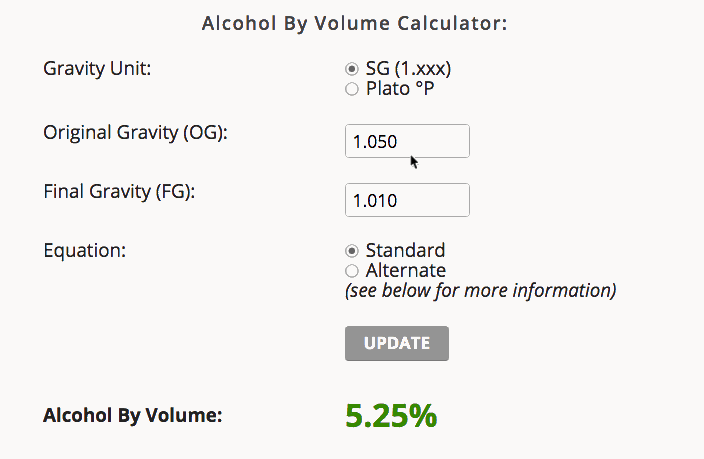
Promoting linkable assets is crucial for and establishing authority in your niche. Effective promotion strategies not only attract backlinks but also increase visibility and drive traffic to your valuable content. This process involves understanding your target audience, crafting engaging content, and leveraging various online channels to maximize reach and impact.A key aspect of successful promotion is identifying the right channels to reach your target audience.
This is dependent on the type of content and the characteristics of your desired audience. Understanding their interests and habits is crucial for choosing the most impactful promotion methods. By tailoring your approach to specific platforms and audiences, you can significantly enhance your chances of generating valuable backlinks.
Effective Promotion Strategies
Effective promotion strategies involve a multi-faceted approach, combining content creation, outreach, and consistent engagement with your audience. Understanding your target audience’s preferences is paramount. For example, if your audience frequents specific online communities, forums, or social media groups, targeting those platforms is more likely to yield positive results.
Examples of Successful Promotion Campaigns
Several successful promotion campaigns showcase the power of targeted strategies. For instance, a blog post about a groundbreaking new technology might be promoted on relevant industry forums and through targeted social media advertising. This combination of methods leverages the potential of different channels and reaches a wider audience, significantly increasing the chances of acquiring valuable backlinks.
Importance of Building Relationships and Networking
Building relationships and networking with influencers and other website owners in your niche is crucial for driving link building. Reaching out to relevant individuals and demonstrating the value of your content can result in valuable backlinks and improve your online visibility. These relationships, nurtured over time, can yield reciprocal links and collaborations that amplify the impact of your promotion efforts.
Channels for Promoting Linkable Assets
Choosing the right channels for promoting your linkable assets is critical for maximizing impact. The effectiveness of each channel depends on your target audience and the nature of your content.
- Social Media Platforms: Leveraging social media platforms like Twitter, LinkedIn, and Facebook can significantly increase visibility. Sharing your linkable assets on relevant groups and engaging with potential linkers can generate substantial traffic and backlinks. Consistent posting and engagement are key to building a following and generating interest in your content.
- Industry Forums and Communities: Participating in industry forums and online communities allows you to engage with potential linkers directly. Sharing your linkable assets within the context of relevant discussions can generate interest and attract valuable backlinks.
- Email Marketing: Targeted email marketing campaigns can be highly effective for reaching potential linkers. Personalized emails that highlight the value proposition of your linkable assets and their relevance to their audience can encourage backlinks.
- Guest Blogging: Guest blogging on authoritative websites in your niche can expose your linkable assets to a wider audience and generate valuable backlinks. Guest posts that offer unique insights and value are more likely to attract attention and backlinks.
- Public Relations: Utilizing public relations strategies can increase your linkable assets’ visibility. Press releases and media outreach can effectively communicate the value of your content and generate backlinks from reputable sources.
Measuring the Impact of Linkable Assets
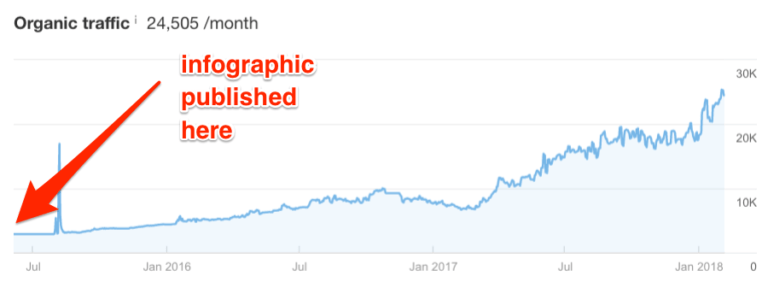
Linkable assets, whether blog posts, infographics, or videos, are valuable tools for driving traffic and building brand authority. However, simply creating them isn’t enough. To truly understand their effectiveness, you need to measure their impact. This involves tracking key metrics to assess their contribution to your overall online strategy.Understanding the performance of linkable assets allows you to refine your approach and allocate resources more efficiently.
Analyzing the data provides insights into what resonates with your target audience, allowing you to create future content that performs even better.
Metrics for Evaluating Linkable Asset Success
Understanding the performance of linkable assets is crucial for optimizing your content strategy. Several key metrics can provide valuable insights into the effectiveness of these assets. These metrics encompass various aspects, including backlinks, website traffic, and user engagement.
- Backlinks: The number of backlinks received is a strong indicator of the perceived value and authority of your linkable asset. More backlinks typically translate to higher search engine rankings and increased visibility.
- Website Traffic: Tracking website traffic driven by the linkable asset helps determine its effectiveness in attracting new visitors. Tools like Google Analytics can provide insights into the source of traffic, allowing you to analyze which linkable assets drive the most visitors.
- User Engagement: Metrics like time on page, bounce rate, and social shares reveal how users interact with the linkable asset. Higher engagement indicates that the content is valuable and relevant to your target audience.
Tracking Backlinks
Analyzing backlinks provides insight into the influence and authority your linkable asset commands.
- Backlink Count: Monitor the number of backlinks pointing to your asset over time. Tools like Ahrefs, SEMrush, or Moz offer detailed backlink analysis.
- Backlink Source Analysis: Determine the origin of these backlinks. High-quality backlinks from reputable websites often carry greater weight.
- Backlink Anchor Text: Examining the anchor text used in backlinks provides valuable clues about how the link is perceived by search engines and the associated s.
Tracking Website Traffic
Website traffic data provides insights into the effectiveness of your linkable asset in attracting new visitors.
- Traffic Sources: Identify which channels (e.g., social media, search engines, referrals) are driving traffic to your linkable asset.
- Traffic Volume: Track the total number of visitors coming to your asset over a specific period.
- Conversion Rate: Measure the percentage of visitors who take a desired action (e.g., sign up for a newsletter, make a purchase) after interacting with your asset.
Tracking User Engagement
User engagement metrics reveal how users interact with your linkable asset.
- Time on Page: Longer time on page suggests that users find the content engaging and valuable.
- Bounce Rate: A low bounce rate indicates that visitors are staying on your asset and exploring further content.
- Social Shares: Track how often your asset is shared on social media platforms. High social shares demonstrate that users find the content worth sharing.
Analyzing ROI of Linkable Assets
To determine the return on investment (ROI) of a linkable asset, correlate the metrics discussed above with business goals.
- Establish Clear Goals: Define what constitutes a successful linkable asset, such as increased brand awareness, lead generation, or sales.
- Assign Values to Goals: Determine the monetary value associated with each goal, e.g., the average revenue generated from a lead. This allows you to measure the ROI.
- Calculate the ROI: Divide the total value generated by the cost of creating and promoting the asset. This provides a quantifiable measure of its success.
Comparative Table of Metrics
| Metric | Description | How to Track | Example |
|---|---|---|---|
| Backlink Count | Number of backlinks to the asset | Use backlink analysis tools | Increased from 50 to 150 backlinks in a month |
| Website Traffic | Number of visitors to the asset | Google Analytics | 10,000 unique visitors from organic search |
| Time on Page | Average time spent on the asset | Google Analytics | Average time on page is 5 minutes |
| Bounce Rate | Percentage of visitors leaving after viewing one page | Google Analytics | Bounce rate dropped from 70% to 40% |
Case Studies of Linkable Assets
Linkable assets are more than just pretty content; they’re powerful tools for driving traffic, building authority, and ultimately, boosting your brand. Successful linkable assets demonstrate a deep understanding of your audience’s needs and interests, providing valuable information that they’re eager to share. This section dives into real-world examples to illustrate how various linkable assets have achieved significant success.Understanding the factors that contribute to the success of linkable assets is crucial.
A well-crafted piece, optimized for discoverability, and designed to provide unique value to readers, will naturally attract backlinks. The key is to create content that people genuinely want to link to, and to strategically promote that content to relevant audiences.
A Case Study: The “Ultimate Guide to “
This guide, meticulously researched and presented in a comprehensive, easy-to-understand format, quickly became a go-to resource for practitioners and beginners alike. It covered a wide range of topics, from research to technical , making it a one-stop shop for valuable information.
Factors Contributing to Success
- Comprehensive Coverage: The guide’s comprehensive approach addressed various aspects of , making it a valuable reference point.
- High-Quality Research: The guide’s content was backed by in-depth research and data, demonstrating credibility and accuracy.
- Clear and Concise Language: The guide was written in a straightforward style, making complex concepts accessible to a broad audience.
Promotion and Optimization Strategies
- Social Media Promotion: The guide was promoted across relevant social media platforms, generating interest and encouraging discussion.
- Email Marketing: Targeted email campaigns were sent to subscribers, alerting them to the new resource and its value.
- Optimization: The guide was optimized for relevant s to improve its search engine visibility.
- Guest Posting: The guide’s authors were invited to contribute to other relevant blogs, further exposing the resource to a wider audience.
Examples Across Industries
- E-commerce: A detailed comparison of various e-commerce platforms, with a focus on features, pricing, and ease of use. This comprehensive guide became a popular resource for aspiring online retailers.
- Software Development: A blog post outlining the latest trends in front-end development, including specific examples of innovative techniques. This piece was shared extensively within the software development community, garnering praise for its insightful observations and practical examples.
- Education: A detailed analysis of the effectiveness of different learning styles, providing actionable strategies for educators and students. This study was widely referenced by educators and educational institutions, showcasing its value.
Linkable Asset Formats
Linkable assets are the cornerstones of successful content marketing strategies. They attract inbound links, boost search engine rankings, and ultimately drive more traffic to your website. Understanding the different formats available and their strengths is crucial for creating content that resonates with your target audience and earns valuable backlinks.Different formats of linkable assets cater to varied interests and needs.
Some formats lend themselves well to specific types of information, while others are more versatile. This section delves into the world of linkable asset formats, exploring their strengths and weaknesses.
Types of Linkable Assets
Linkable assets come in many forms, each with its own set of characteristics. Choosing the right format depends on the nature of your message and your target audience.
- Infographics: Infographics are visual representations of data and information. They are effective for conveying complex data concisely and engagingly. They often attract backlinks because they present information in a visually appealing and shareable format. The use of compelling visuals and concise data points makes them shareable on social media platforms, enhancing their discoverability.
- White Papers: White papers are in-depth reports on a particular topic. They provide valuable information and establish your expertise in a specific area. Their thoroughness and well-researched content make them valuable resources for industry professionals. Backlinks often come from related websites or individuals seeking authoritative insights.
- Case Studies: Case studies analyze real-world examples of how a product or service has helped a client achieve specific results. They demonstrate the practical application of your solutions and provide compelling evidence of success. Case studies are frequently linked by businesses looking to showcase similar solutions and by journalists and bloggers seeking compelling narratives.
- Blog Posts: Blog posts provide a platform to share your knowledge and insights on a particular topic. The conversational tone and readily digestible format make them easily accessible and shareable. They are frequently linked by other blogs, websites, and social media users seeking information on the topic.
- Ebooks: Ebooks are comprehensive guides on a specific topic. They offer more in-depth information than blog posts and can attract backlinks from those seeking detailed information or industry-specific insights. Their length and in-depth nature make them valuable resources for professionals seeking to delve into the topic further.
Comparing Linkable Asset Formats
The table below contrasts different formats of linkable assets, highlighting their advantages and disadvantages.
| Format | Description | Advantages | Disadvantages |
|---|---|---|---|
| Infographics | Visual representation of data/information | Highly shareable, visually appealing, easy to understand | Limited space for detailed explanations, may not be suitable for complex topics |
| White Papers | In-depth reports on a specific topic | Establishes expertise, valuable resource, attracts backlinks from industry professionals | Requires significant research and writing time, may be challenging to make engaging |
| Case Studies | Analysis of real-world examples | Compelling narratives, demonstrates results, attracts backlinks from other businesses | Requires detailed client information, might be challenging to generalize |
| Blog Posts | Sharing knowledge and insights | Conversational tone, readily shareable, attracts backlinks from other blogs and websites | May not be as in-depth as other formats, might be harder to establish expertise |
| Ebooks | Comprehensive guides on a specific topic | In-depth information, establishes expertise, valuable resource | Significant effort and time required, can be difficult to promote |
Final Summary
In conclusion, linkable assets are more than just content; they’re strategic investments in your WordPress site’s growth. By understanding how to define, create, optimize, promote, and measure these assets, you can significantly increase your website’s authority, attract valuable backlinks, and ultimately drive traffic and engagement. This guide provides a roadmap for building a strong online presence, leveraging the power of linkable content to your advantage.
